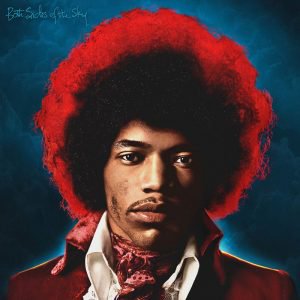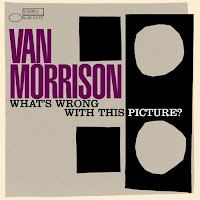Europe ‘72 doesn’t replicate a typical show, but it does mirror the “Skull & Roses” album by presenting songs old and new. Pigpen takes a smaller role throughout, with new pianist Keith Godchaux filling in the arrangements, and his wife Donna singing backup. The energy flags a bit over the six sides, but it’s very possible that many early listeners concentrated on a side at a time.
After a rollicking “Cumberland Blues”, “He’s Gone” is a pleasant saloon lope that provides the title of a future live album and “One More Saturday Night” makes the transition from Bob Weir solo track to Dead standard. “Jack Straw” is a mysterious song with many layers, possibly a murder ballad, possibly the plaint of escaped convicts. There’s no such mystery about “You Win Again” except that it’s a Hank Williams song. “China Cat Sunflower” emerges from the psychedelic era to form a jam with “I Know You Rider”, which some Dead-influenced band is likely playing somewhere right now, or thinking about it.
“Brown Eyed Women” has a somewhat modern sound, but lyrics that evoke moonshiners from the early part of the century, and it’s a grower. Pigpen comes to the microphone for “It Hurts Me Too”, the ancient blues tune, but not as slow as “Ramble On Rose”. “Sugar Magnolia” gets extended nicely, complete with fake ending, and keen ears have spotted that one can pick out a few notes from “Dark Star” at the beginning. Pigpen emerges again on “Mr. Charlie”, a decent midtempo boogie, but “Tennessee Jed” blends in with the other low-energy tracks to keep it from standing out.
Right on time, the album switches to extended jams, as on Live/Dead, which actually helps bring us around. Side five begins with an introduction for “Truckin’” that acknowledges its hit single status, and extends after 13 minutes into an “Epilogue”. This is presumably continued in a mildly atonal “Prelude” on side six, before ending with a slow “Morning Dew” that manages to sustain interest.
For continuity’s sake, the first CD version of Europe ‘72 split the album across two discs, comprising three sides apiece. The eventual expansion had the first four sides on one disc, with the rare Pigpen track “The Stranger (Two Souls In Communion)” as a bonus; a hidden gem, to be sure, if a shaky performance. The other CD offered the “Truckin’” through “Morning Dew” run, plus Weir’s “Looks Like Rain” and a half-hour romp on the Rascals’ “Good Lovin”, which is interesting if you like Pigpen.
Even before that, the same period was mined for other archival releases. Hundred Year Hall was culled from a concert in Germany, and had the boost of being the first release following Garcia’s death. A complete show from two days earlier was eventually released in a shuffled order as Rockin' The Rhein With The Grateful Dead, while Steppin' Out With The Grateful Dead: England ’72 offered four discs from various dates. For the absolute collector, Europe '72: The Complete Recordings offered all 22 shows on 73 CDs, packed in a suitcase. Each show was eventually released individually, but even more accessible for those on a budget was Europe '72 Volume 2, which presented a companion to the original without repeating any of its songs, though there is some overlap with the Skull & Roses set. The first disc delivers even more Pigpen, with the second more devoted to lengthy jams and a lovely “Sing Me Back Home”. (Those who still can’t get enough can sample the New York shows immediately before the tour on Dick's Picks Volume 30, one entire show of which is on Dave's Picks Volume 14.)
Grateful Dead Europe ‘72 (1972)—3½
2003 CD reissue: same as 1972, plus 6 extra tracks
Archival releases of same vintage:
• Hundred Year Hall (1995)
• Steppin' Out With The Grateful Dead: England ’72 (2002)
• Dick's Picks Volume 30 (2003)
• Rockin' The Rhein With The Grateful Dead (2004)
• Europe '72: The Complete Recordings (2011)
• Europe '72 Volume 2 (2011)
• Dave's Picks Volume 14 (2015)
• Lyceum Theatre, London, England 5/26/72 (2022)

:format(jpeg):mode_rgb():quality(90)/discogs-images/R-2433084-1391882855-9427.jpeg.jpg)




